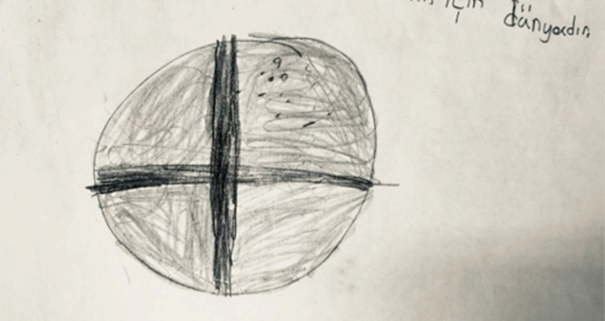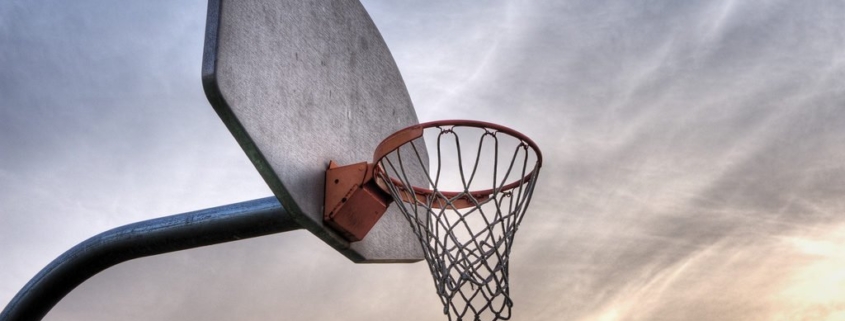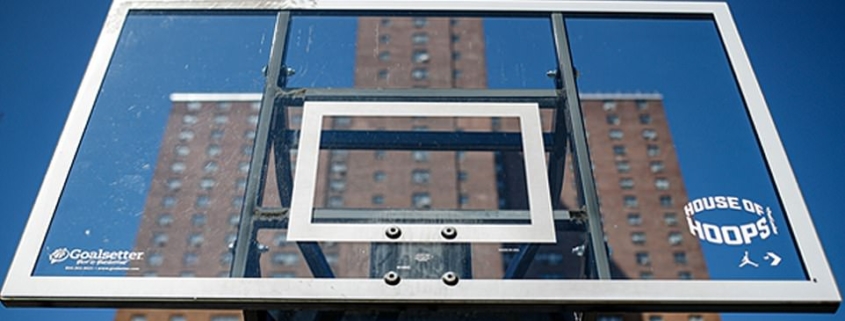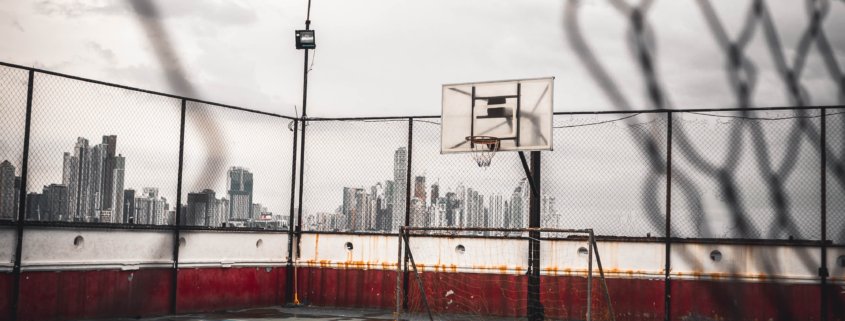Resilience is the key for overcoming crises… But how resilient is the European Basketball?
/in General /by Cem KaramurselA detailed look at some major crises in the past and how European Basketball reacted
Currently, as in all other areas of human life, there is only one item on the agenda of European Basketball, namely the Corona pandemic and its impact on different layers of basketball. The outbreak of the coronavirus is a human tragedy with unprecedented impact for the entire world. It seems likely that global economy will fall into a recession whose length will be dependent on the actual recovery path to be followed. In that context, the word “resilience” is being called out more and more often as being the key for a successful recovery from the corona pandemic.
Clearly, it cannot be argued that the European Basketball is being managed effectively and rationally, especially in financial terms. And it, for sure, does not have a sustainable operating and financial model. Vast majority of the clubs have been in a loss-making situation for many years. They manage to survive only because there are sponsors and/or shareholders who are (due to different reasons) passionate about basketball and feel committed to it. While it is true that the (financial) history of European Basketball has been pretty turbulent witnessing quite a few number of clubs going out of “business”, in almost all cases, there is one main reason that stands out for the insolvency of clubs, namely the high dependency on a single or a small number of sponsors and/or shareholders. In that case, if a sponsor and/or shareholder decides (for whatever reason) to withdraw its support, it is virtually certain that the related basketball club goes out of business.
As mentioned earlier, it is a fact that European basketball clubs have had structural problems for many years. This is also one of the main reasons as to why there is so much fear and concern about the impact of the corona pandemic. It seems possible that some clubs might cease their activities (due to the main reason explained above) and the others end up cutting their budgets for the future seasons. There are many different scenarios about the future of European Basketball, most of them being extremely negative. Without underestimating the seriousness of the crisis, we believe that, despite all these losses and challenges over years, the European Basketball has also developed a certain level of resilience over the years. Why do we think like that? Here are some examples of demonstrating resilience and overcoming crises in the history of European Basketball.
Oil Price Shock and German Basketball
The oil crisis began in October 1973 when the members of the OPEC proclaimed an oil embargo. The embargo was targeted at nations perceived as supporting Israel during the Yom Kippur War. By the end of the embargo in March 1974, the price of oil had risen by nearly 400%. The embargo caused an oil crisis with many short- and long-term effects on global politics and the global economy. Among other nations, the impact of the oil crisis on the German economy was devastating. In 1975, the peak of the crisis, the unemployment rate had almost doubled compared to the preceding year and Germany’s economy shrank for the first time in the history of Federal Republic of Germany, leading to a stagnation. Additionally, certain restrictions were imposed in the daily life as to the consumption of oil such as driving bans on Sundays, speed limitations on highways (in a country that is famous for not having any speed limits at all), restrictions on flights etc.
During this crisis, and despite all the associated challenges, German Basketball managed to achieve two important milestones: German Basketball League (BBL) had played its inaugural season in 1966, consisting of one northern division and one southern division, each comprising 10 teams. Starting with the 1971-72 season, the size of each division was reduced to 8 teams. With the 1975-76 season, essentially in the middle of the economic crisis, the league structure was changed into a ten team first league (1. Basketball Bundesliga), and a 20 team second league (2. Basketball Bundesliga), i.e. increasing the number of professional teams from 16 to 30 including the creation of a second division. Furthermore, in the same year the German Basketball Federation (DBB) signed a contract with the European Professional Basketball League and put together a team in this competition, the Munich Eagles. Hence, despite the crisis, German Basketball managed to achieve two important milestones while further increasing its popularity. A total of over 100.000 spectators attended the 90 games of the 1975-76 season, the games of 1. FC Bamberg visited an average of over 2.000 fans per game, and almost 2.500 people attended Leverkusen’s last game of the season against ASV Cologne.
Yugoslav Wars and Partizan
The Yugoslav Wars were a series of separate but related ethnic conflicts, wars of independence and insurgencies fought in the former Yugoslavia from 1991 to 2001, which led to the breakup of the Yugoslav state. Its constituent republics declared independence, despite unresolved tensions between ethnic minorities in the new countries, fueling the wars.
After the departure of Divac, Paspalj, Grbovic, Savovic and other main players from the 1980s, Partizan started the 1991-92 season with a rejuvenated squad, led by an exceptionally talented backcourt pair of Aleksandar Djordjevic and Predrag Danilovic. A previous team captain and former national team player with no coaching experience, Zelimir Obradovic, was chosen as a first team coach. Another former Partizan coach and player, an established European basketball expert, Professor Aleksandar Nikolic became his mentor. Ethnic conflicts in the region have escalated towards the autumn on 1991, upon which FIBA decided not to allow teams from Yugoslavia to play their home games at their home venues. Partizan decided to play its “home” games in the Madrid suburb of Fuenlabrada, in the Polideportivo Fernando Martín arena. Coach Obradovic’s team began a long season of European and domestic matches, often traveling thousands of kilometers in just a few days, with performance gradually improving. Partizan finished the competition in the group stage in the Euroleague in fourth place with nine wins and five defeats. That meant that Partizan had to play crucial matches to qualify for the Final Four with Knorr Bologna. Bolognese had a strong team, however Partizan came on top in three games and for the second time qualified for the Final Four. At the Final Four held in Istanbul in April 1992, Partizan won the title of European champion after winning both games – in the semifinals against Italian Philips Milano and in the finals Spanish Joventut Badalona. The average age of the team was only 21.7 years, and out of 17 games all but one (the quarter-final game against Knorr Bologna) were played on foreign grounds. The season finished triumphantly with victories in the national championship and the Cup. Despite all the negative challenges of a civil war, Partizan managed to win the highest competition in European Basketball and brought up a great generation of players (and later coaches and basketball managers) who still continue shaping the European Basketball landscape.
Another amazing story from these difficult times is that after wining his first Euroleague title, Coach Obradovic decided to stay with Partizan for one more year, without receiving any salary for the entire season mainly due to economic challenges caused by the war, just for the sake of completing his “learning and education” process with Professor Nikolic. In hindsight, it can be concluded that it was a great decision made in tough times which seems to have paid off multiple times over Coach Obradovic’s amazing career so far.
Economic Crises in Turkey and Turkish Basketball
Turkey, as an emerging economy, has experienced several economic crises over the years and decades. Its economy has been fragile, especially due to its heavy dependence on foreign investments for economic growth. Some structural problems (such as in the banking system) and political instability were among the main reasons.
In 1994, the country experienced its one of the most devastating economic crises in its history. Turkish lira has devalued by more than 160% against USD within a timeframe of only three months. To stop the bleeding, government had to issue debt instruments with an interest rate of up to 400% p.a. In the same year, Turkey registered its highest-ever inflation rate which exceeded 125% and the economy shrank by 6%. The years between 1994 and 2001, continued to be challenging which witnessed the bankruptcy of 10 private banks causing losses in billions. In 1999, the country experienced a major earthquake which killed more than 17.000 people. Since it occurred in the heart of Turkish economy (its epicenter was only a few kilometers away from the Country’s largest oil refinery and all leading industrial cities like Kocaeli, Sakarya and to a certain extent also Istanbul were heavily impacted), its impact on the economy was major. Triggered by a political dispute between the Turkish prime minister and president, huge panic broke out in the country’s markets. Stocks plummeted by 18% in one day and overnight interest rates reached unbelievable levels of 7500%. Large quantities of Turkish lira were exchanged for U.S. dollars or euro leading to significant devaluation of the currency by about 40%. In all these years, especially in the period from 1994 through 2001, the Turkish economy was under severe pressure. Unemployment rates increased, all areas of life, from health to education, were negatively impacted. Political and social climate was very tense.
Despite this extremely adverse environment, Turkish Basketball won its very first European trophy in 1996, with Efes Pilsen (currently known as Anadolu Efes) bringing the FIBA Korac Cup to the country. In the following season (1996-97), another Turkish club, TOFAS, again reached the final in Korac Cup ultimately losing to Aris Thessaloniki. Three years later, Efes Pilsen showed up in FIBA Euroleague Final Four tournaments in two consecutive seasons 1999-00 (for the first time in club history) and 2000-01 which were in the middle of the country’s hardest economic, political and social crises. Just to put into the right context: Until Fenerbahce’s first appearance in EuroLeague Final Four in the 2014-15 season, no other Turkish team could achieve that. Anadolu Efes could finally repeat that success only in last season, i.e. after 18 years. As to the Turkish national team, 2001 was a special year when they reached the final game of Eurobasket, for the very first time in the Turkish basketball history.
Russian Financial Crisis and Russian Basketball
The Russian financial crisis hit Russia on 17 August 1998. Declining productivity, a high fixed exchange rate between the ruble and foreign currencies to avoid public turmoil, and a chronic fiscal deficit were the reasons that led to the crisis. Two external shocks, the Asian financial crisis that had begun in 1997 and the following declines in demand for (and thus price of) crude oil and nonferrous metals, severely impacted Russian foreign exchange reserves.
On 17 August 1998, the Russian government devalued the ruble, defaulted on domestic debt, and declared a moratorium (i.e. delay) on repayment of foreign debt for three months which caused severe turbulence in international markets as well, including a collapse of a very prominent hedge fund based in the US despite bailout attempts from the world’s leading banks. Russian inflation in 1998 reached 84% and welfare costs grew considerably. Many banks closed as a result of the crisis. The financial collapse resulted in a political crisis, too.
Only two years following the country’s most severe economic crisis after the Soviet era, CSKA was back on the stage of the top European basketball competition by reaching the FIBA Euroleague Final Four in the 2000-01 season. One year later, Lokomotiv Kuban appeared in the final game of FIBA Korac Cup losing against Nancy from France.
Global Financial Crisis and Its Aftershocks in Spain and Greece
The financial crisis of 2007-08, also known as the global financial crisis, was a severe worldwide economic crisis. It is considered by many economists to have been the most serious financial crisis since the Great Depression of the 1930s.
The crisis began in 2007 with a depreciation in the subprime mortgage market in the United States, and it developed into an international banking crisis with the collapse of the investment bank Lehman Brothers in September 2008. Excessive risk-taking by certain banks helped to magnify the financial impact globally. Massive bailouts of financial institutions and other palliative monetary and fiscal policies were employed to prevent a possible collapse of the world financial system. The crisis was nonetheless followed by a global economic downturn, the Great Recession. The Asian markets (China, Hong Kong, Japan, India, etc.) were immediately impacted and volatilized after the U.S. sub-prime crisis. The European debt crisis, a crisis in the banking system of the European countries using the euro, followed later.
Spanish Financial Crisis
The 2008-2014 Spanish financial crisis, also known as the Great Recession in Spain or the Great Spanish Depression, began in 2008 during the world financial crisis of 2007–08. In 2012, it made Spain a late participant in the European sovereign debt crisis when the country was unable to bail out its financial sector and had to apply for a €100 billion rescue package provided by the European Stability Mechanism. The main cause of Spain’s crisis was the housing bubble and the accompanying unsustainably high GDP growth rate. During the third quarter of 2008 the national GDP contracted for the first time in 15 years, and, in February 2009, Spain (and other European economies) officially entered recession. The economy contracted 3.7% in 2009 and again in 2010 by 0.1%. It grew by 0.7% in 2011. By the 1st quarter of 2012, Spain was officially in recession once again. In 2012, the European Commission approved the Spanish government’s plan to shrink and restructure three major Spanish banks. In terms of unemployment, Spain suffered a severe setback in October 2008, when it saw its unemployment rate surging to 1996 levels. By the end of March 2009, unemployment rate hit 17.4% with the jobless total having doubled over the past 12 months. By March 2012, Spain’s unemployment rate reached 24.4%, twice the eurozone average.
In the time period between 2008 and 2014, Spanish teams achieved eight appearances in EuroLeague Final Four, winning one of them and losing twice in the final game. In EuroCup, Spanish teams reached eight times the semifinals (or above) within the same period, winning it twice and losing in the finals three times.
Greek Debt Crisis
The Greek government-debt crisis was the sovereign debt crisis faced by Greece in the aftermath of the financial crisis of 2007-08. The Greek crisis started in late 2009, triggered by the turmoil of the world-wide Great Recession, structural weaknesses in the Greek economy, and lack of monetary policy flexibility as a member of the Eurozone. In all, the Greek economy suffered the longest recession of any advanced capitalist economy to date, overtaking the US Great Depression. Greek GDP’s worst decline, −6.9%, came in 2011, a year in which seasonally adjusted industrial output ended 28.4% lower than in 2005. During that year, 111.000 Greek companies went bankrupt (27% higher than in 2010). As a result, the seasonally adjusted unemployment rate grew from 7.5% in September 2008 to a then record high of 23.1% in May 2012, while the youth unemployment rate time rose from 22.0% to 54.9%. From 2009 to 2012, the Greek GDP declined by more than a quarter, causing a ” depression dynamic” in the country.
From 2009 through 2018, Greek teams attended the EuroLeague Final Four for seven times, winning the title three times and losing in the finals three times. Despite this success, it can be argued that overall the club budgets were negatively impacted over time due to the Greek debt crisis and the overall economic situation.
Every crisis has a different reason and impact, and corona pandemic is definitely an unprecedented disruptive event for the entire world. And for sure, we are not arguing that economic crises in the past did not have any impact on European Basketball. In the contrary, the impact was definitely felt, like in the case of Montepaschi Siena, one of the most successful Italian basketball teams in 2000s, whose main sponsor was significantly hit by the Global Financial Crisis which led to their withdrawal from basketball, just to give one example. Therefore, it could definitely be argued that the European Basketball would be better off without all the economic and financial crises explained above. However, it is also a fact that even in the most difficult times European Basketball continued to exist and showed great examples of resilience.
The key here is to focus on “doing the right thing” in a persistent manner, especially in terms of reducing dependency on one single or a small number of revenue sources, and tapping into own resources by developing next generations of European Basketball stars made in Europe. History shows that the European Basketball does have the potential as well as the resilience for that. We just need to remember it and start acting accordingly, carefully but with full confidence!
EBAG
Coronavirus outbreak – A huge catastrophe for European basketball or an opportunity to start thinking differently?
/in General /by Cem KaramurselThe coronavirus outbreak is a serious human tragedy, affecting hundreds of thousands of people. More than 175 countries and territories have reported cases of COVID-19. It is also having a growing impact on the global economy with real recession fears in the short to mid-term. Sport has not been immune to this either. The abrupt suspension or in some cases even cancellation of the competitions caused a shock in all major sports, not only from a sporting perspective, but also in terms of its economic impact, especially on clubs.
In European basketball, the (possible) impact is estimated to be significant, mainly due to loss of game day as well as commercial revenues incl. sponsoring. While this can lead to budget cuts in the short to mid-term, the impact on the liquidity of the clubs can be devastating and existential, especially for the small and mid-sized clubs competing in Tier 2-4 European competitions as well as domestic leagues. Some of these clubs might become bankrupt and cease their basketball operations.
As of today, unfortunately there is still no slow-down in the number of infections in certain countries and it cannot be argued that the curve has begun to flatten, meaning that the uncertainty about the future scenarios is still high. Mainly there are two recovery scenarios that are deemed likely by some experts: delayed recovery and prolonged contraction. In the former scenario, the spread of the virus shows signs of slowing down by mid-/end of April, having a seasonal character and no major number of infections in other parts of the world. In this scenario, the recession will still kick in during 2020, however a genuine recovery will start in Q4 this year. In the latter scenario, the contention and mitigation of the pandemic takes more time, expanding its economic impact to a longer period of time. Initial signs of an economic turnaround will be observed in Q2 2021.
Good news is, without underestimating the seriousness of the situation not even a bit, at some point the humanity (and the basketball community) will win this fight and go back to normal. This is directly dependent on how we are reacting to this extraordinary situation. Besides adhering to preventive measures like staying at home and reducing our social contacts to the absolute minimum, there are certain responsibilities that every individual or institution in life need to resume.
In this article, we are focusing on the responsibilities of the (basketball) clubs. It is fully understandable that clubs are fully concerned about their financial situation and are going through a tough period with extremely high level of uncertainty. Figuring out the exact impact of the pandemic to their basketball operations is for sure currently on the top of their agenda. On the other hand, the suspension or cancellation of the competitions have given the clubs an unexpected break from their extremely busy schedules that were overfilled with trainings, games, sponsoring activations, media days etc. Now, the life has slowed down a little and is providing us with the opportunity to think about what is really important in life. In that context, following thoughts and actions might be worth revisiting and reflecting on for the (basketball) clubs.
Remembering the core function of clubs within the European model of sports
In the European model of sports, sports clubs are not profit-maximizing enterprises, but rather represent an essential institution in the society, namely an “association” whose main goal is to create an environment of social interaction and solidarity for its members and fans. This aspect cannot and shall not be disregarded, especially in such critical and challenging situations, when the society needs good examples of solidarity and leadership. Keep in mind that your communities desperately need your support in these days. Clubs may be going through a difficult phase from a financial standpoint. However, this does not (or should not) impair their ability to undertake actions for the benefit of the society. This can be done in different forms, such as organizing donations for the institutions/people in need, creating awareness and demonstrating gratitude for all the great efforts of people working in critical roles such as the doctors, nurses, other healthcare personnel, people working in supermarkets and other organizations to ensure a smooth supply of essential goods and services despite all the challenges, social institutions such as homeless shelters and any other similar jobs that are serving currently the humanity. Clubs can and should become a social platform, a catalyst for strengthening the collective moral and playing a leading role in showing solidarity.
Communicating with all your stakeholders… everyday!
One aspect of this solidarity is keeping the communication channels fully open and active. In these uncertain times when nobody really knows how and when this emergency situation will come to end, it has an enormous importance to keep in regular contact with all key stakeholders, obviously adhering to the rules of social distancing. Your key stakeholders include but are not limited to your fans, members, employees including players and coaching staff, business partners as well as sponsors. Speaking of the latter, sponsors are among your key partners. Some of them, depending on the industry they are engaged in, are and will be going through some difficult times. Make them feel you are fully standing by them. Obviously some of the sponsoring contracts might be cancelled, however this may not be always the best solution. Other alternatives, with mutual benefits, should be on the table and discussed by both parties with full acknowledgement of the current situation. Different stakeholders have different needs, but one is common: solidarity and mutual understanding!
Exploring new ways of interaction
Digital technology is offering a great opportunity to enhance social networking while keeping the social distancing. There are quite a few very good examples of clubs that are embracing this great opportunity and increasing their level of engagement and communication primarily with their fans via social media and also e-sports. There are endless opportunities in this area some of which can even compensate the loss of sponsorship revenues from game related activities. Digital communication can by no means fully replace the personal interaction. However, in case of such severe limitations of social life, it can literally be a life saver. This experience should also bring an “aha”-effect for several basketball clubs. Those clubs who neglected investments in their digital infrastructure are definitely more severely impacted by the crisis than the ones who are capable of keeping their dialogue with their fans intact through different means.
Spending time for (re-)thinking about the vision, mission and future strategy of your club
Nowadays existential concerns, especially for some of the clubs, might be overwhelming. It is still important to find the time during this “break” to revisit your clubs’ vision, mission and strategy. Going back to the roots, reflecting on the founding principles, values and the main reason for the existence of the clubs will ensure a rebuild and strengthening of your clubs’ fundament. This extremely unusual period of time can, in that regard, represent a great opportunity for learning and development for the clubs. Once the pandemic is over, which will be the case sooner or later, clubs should be able to operate on a more sound basis and be more aware about their mission, role as well as their responsibility for the communities that they are living in.
Coronavirus pandemic is for sure a very unfortunate event for the entire humanity that nobody would have wished to experience. However, ultimately it is up to us how to react to it. For clubs, despite its devastating impact, it can be a “blessing in disguise”, if they manage to keep calm, interact with all key stakeholders on a regular basis and focus on what really matters.
Stay safe and healthy!
EBAG
10 Suggestions for the Managers of Domestic Leagues and Teams in European Basketball
/in General /by Cem Karamursel2019 is coming to an end. And it is likely that it will be remembered for some key milestones in European basketball which have a direct impact on national leagues and a vast majority of the clubs that are not competing at the highest level in Europe. For the first time in the history of European basketball, participation to the continent’s top-tier competition was detached from the sporting performance in any of the domestic leagues in Europe. Number of participants in that competition was increased to 18 (from 16 last year) which added additional pressure to the overall competition calendar in an Olympic season. And also for the first time, a major team like Olympiacos is playing only in Euroleague after being relegated to the second division in Greece. All these developments are deemed to have (intentionally or not) an adverse impact on the local leagues and teams that are not a Euroleague-participant.
Read moreThe Economic Reality of European Basketball & Three Critical Success Factors to Ensure Sustainability (and Survival) in the Future
/in General /by Cem KaramurselA comparison of Euroleague with the NBA in economic terms is quite striking. NBA’s total annual revenues amounted to $6.3 billion in the 2017/18 season, with an average club revenue of approx. $209 million, whereas Euroleague’s total revenues (incl. all team revenues) are estimated at $511 million for the current season (both according to Forbes), i.e. less than one tenth of NBA’s revenues. Unlike the NBA, in general, the European Basketball is (still) not managed as a “business” with profit maximization as being its ultimate goal. Instead, it is heavily dependent on cross-funding by football operations of leading clubs and/or sponsoring revenues which are often (mis)perceived as “donations” to the clubs without any attached obligation in terms of delivering added value in exchange. As such, the current economic model of European Basketball creates significant doubt about its sustainability and future competitiveness.
Read moreOff to a good start…
/in General /by Cem KaramurselIt’s been almost a year since we launched our initiative with a quite ambitious goal, namely generating new ideas for European Basketball that are based on scientific, objective and fact-based methods while, at the same time, represent practical solutions that can be applied in the “real” world of European Basketball.
We are very glad to share with you today that it’s been a pretty successful start and very productive eleven months, both in terms of generating several interesting, detailed and insightful analysis reports about the current issues and challenges as well as building up and expanding our network in European Basketball. We prepared a total of twelve reports and studies which we have shared with key stakeholders, predominantly league organizations and federations. The feedback and the initial reactions we’ve obtained so far have been very positive and encouraging. The initial focus has been on three key areas, (i) Governance, (ii) Financial Stability / Club Licensing and (iii) Youth Development programs. Read more
A new initiative with an ambitious vision…
/in General /by Cem KaramurselFirst of all, sincere thanks for visiting our website and checking out the blog section. If you have been supported by Google in finding this page, it is highly probable that the main reason as to how you ended up at this blog has something to do with your passion for (European) basketball combined with your interest (or even desire) to find sustainable solutions to its structural and institutional challenges. Exactly that combination has driven us to embark upon this journey! Read more







